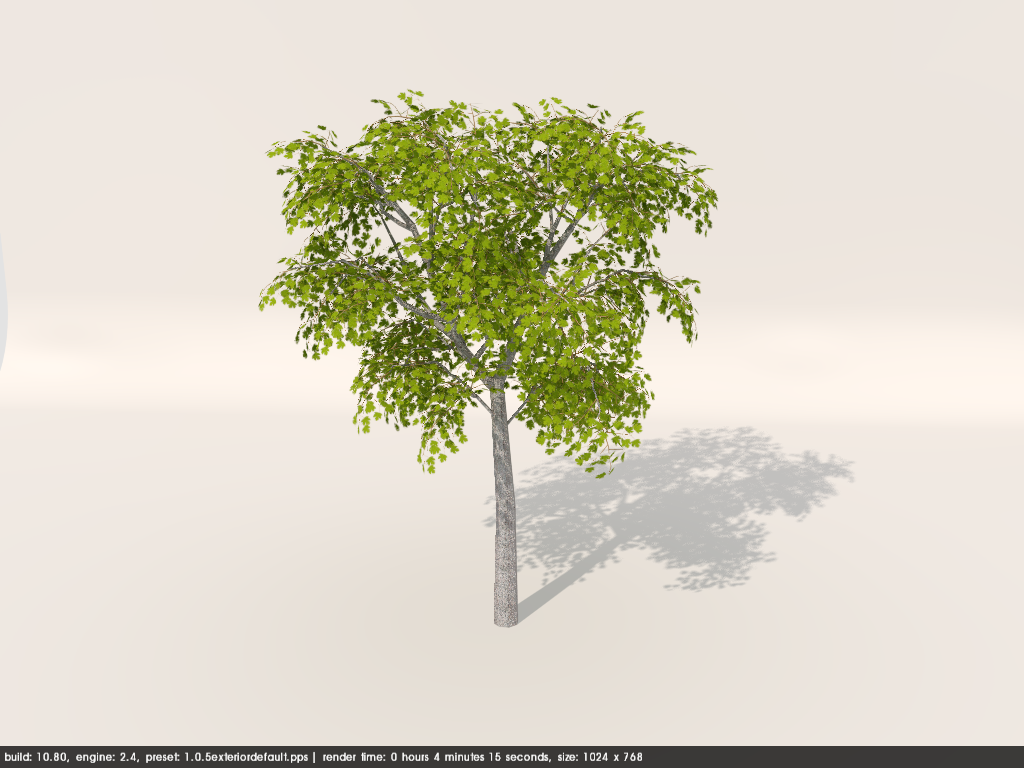They are only 700k in size as well, which is pretty neat.
I wonder whether this approach would lend itself to a Ruby script. Once you have the branching structure, level 1, level 2, level 3 etc created with simple components, if the Ruby script determines the insertion point, rotation, angle of each component, you could swap out or load in any number of more complex branches. This is in effect what I did manually with the predefined components. I made the paths for the branches manually, used Tapermaker to create the 3d extruded versions, and built the (and modified Richard's) 3d leaf clusters.
Let's say you have an L-system script which creates the basic structure, you could have modules which create the leaf components, and the branches. Then, you swap the simple components for the more complex ones and you're there.
I think one could create a fairly straightforward typology for trees. There are a few basic variations of form, which simplify the hundreds of variations in the parameters to build trees. For example a scots pine (like most conifers) has a single trunk, with branches radially around the trunk, projecting horizontally. Larch trees have a similar single trunk with branches that are angled downwards and curl up at the ends. Birch trees also have a primary single vertical trunk element (although some species have more) with slender branches that are generally angled upwards, but tend to droop. Oak trees have a short (relative to the height of the tree) primary trunk, which branches into a number of thick branches which are inclined to branch more or less horizontally. There are also only a few types of basic leaf arrangements.
I think that it ought to be possible to build up maybe a dozen basic templates which will cover maybe 80% of the most common tree types.
I realise that this is a gross over-simplification, but having tried at least 8 different tree generation applications, it is difficult and time-consuming to create trees that look like real species. Without any real understanding of the botany behind the tree growth patterns, one can struggle to create something that looks like a real example of the species.
The application Woody3d (http://woody3d.com/home/) is a good example. If you look at their tree library, some of the examples there look good, but nothing at all like their real life counterparts. It looks like a nice application, and some of the rendered images look good, but the trees look a bit limited. For example it doesn't seem to be able to simulate branch droop. One of the things that stops me spending a lot more time on this is my limited knowledge of trees 
There are lots of Open Source applications whose code that could quite legitimately be used for this, but I suspect it would be a very time-consuming task!



